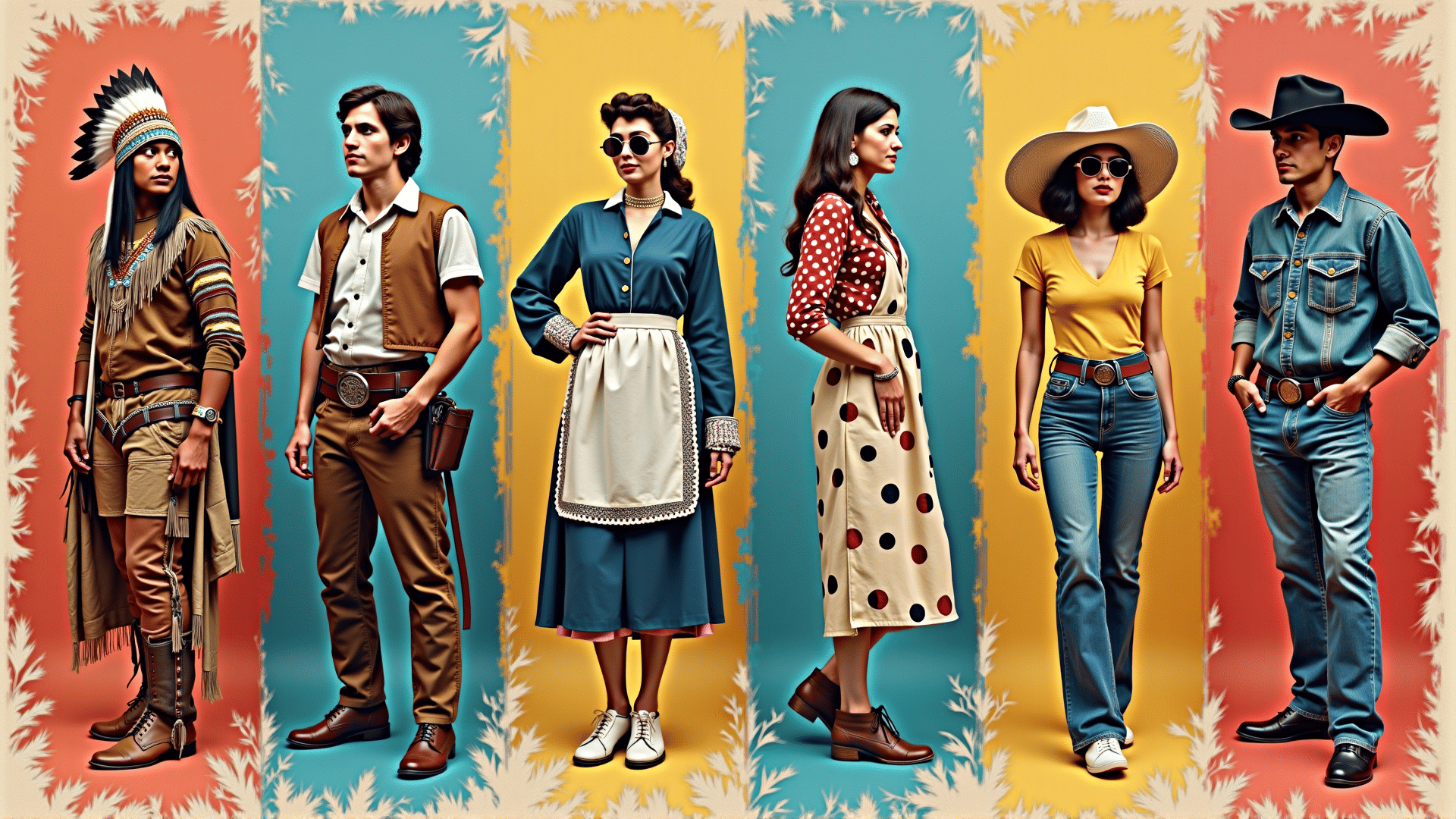American clothing traditions have undergone significant transformations influenced by a rich tapestry of cultural interactions and historical events. From the indigenous attire of Native American tribes to the contemporary fashion trends embraced today, clothing in America mirrors the nation's diverse heritage and evolving identity.
Pre-Colonial and Colonial Eras
In pre-colonial times, Native American tribes crafted garments from materials such as animal hides, plant fibers, and feathers, each region offering its own distinctive styles and techniques. These garments were not only practical, considering the climate and lifestyle, but also carried cultural and spiritual significance.
The colonial period introduced European styles to the American continent. European settlers brought with them fabrics like wool and linen, as well as techniques for tailoring clothes. Puritans favored modest, dark-colored clothing, reflecting their austere lifestyle. In contrast, the Southern colonies, influenced by the warmer climate and economic wealth, embraced brighter colors and lighter fabrics.
19th Century Changes
With the onset of the 19th century, America began to develop its own identity, separate from European influence. The Industrial Revolution played a pivotal role, with mass production making clothing more accessible and diverse. Women's fashion evolved dramatically, transitioning from the structured and elaborate gowns of the Victorian era to the more practical attire needed for involvement in the workforce during times such as the Civil War.
Men's fashion also saw significant changes, with the Western frontier inspiring rugged, durable clothing such as denim jeans and cowboy hats, items that would become quintessentially American.
20th Century Innovations
The 20th century was a time of rapid change and experimentation in American fashion. The jazz age of the 1920s introduced flapper dresses and cloche hats, reflecting a newfound freedom and rebellion against previous societal norms. The economic constraints of the Great Depression saw a shift to more conservative and cost-effective clothing, while the 1940s were marked by the utilitarian styles prompted by World War II, including the iconic women's trousers and “Rosie the Riveter” inspiration.
The post-war era introduced a boom in consumer culture, leading to the rise of distinct styles such as the poodle skirts and leather jackets of the 1950s. The counterculture movements of the 1960s and 1970s brought about diverse styles, from hippie aesthetics with tie-dye and bell-bottoms to the punk movement's embrace of leather and studs.
Contemporary Trends
In recent decades, American fashion has become a melting pot of global influences, technology, and social movements. The rise of social media has accelerated the spread of trends, allowing for greater experimentation and fusion of styles—from streetwear to high fashion. Sustainability and ethical production have become significant considerations, reflecting a growing awareness about environmental and social issues.
Additionally, contemporary American fashion continues to celebrate individuality and diversity. Designers and consumers alike draw inspiration from myriad cultural backgrounds, redefining what it means to dress in "American" style.
Throughout its history, American clothing traditions have been a powerful reflection of the nation’s social changes, cultural diversity, and innovative spirit. As society continues to evolve, so too will the fabrics and fashions that Americans wear, telling ever more complex stories of identity and culture.
